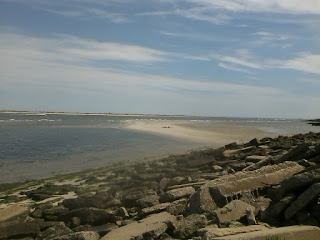How much home can you buy for $2 million?
You might wonder why I'm raising such a question here. It's not that I'm getting rich from writing this blog: In fact, I haven't made a cent from it. Then again, I've never made any attempt to monetize this site.
The question entered my mind because of something I saw during my ride yesterday.
In some parts of this nation, two million dollars can buy you a veritable palace, or at least a mansion. I have to admit, of the ones I saw in this article, I am partial to the ones in Poulsbo, Washington and Block Island, Rhode Island. Perhaps those high wispy clouds tinged by the sunset make the one in Washington State seem even more beautiful than it is. And I just might like the one in Rhode Island because I'm generally partial to New England.
So...what does $2 million get you in New York?
Yes, a toilet.
This public restroom facility (I think that's the official name for structures like it.) is in Gravesend Park, Brooklyn. While growing up, I spent a fair amount of time in that park, wedged between the 18th Avenue shopping area and a Department of Sanitation garage.
Can't beat the location, right? Maybe that's why it cost $5000 per square foot: more than it would take to buy the most expensive apartment in Trump Tower!
And, no, there are no gold-plated fixtures or marble ceilings. It's just a basic public restroom with steel stalls and fixtures. At least it was clean, which is all I ask when I stop to take care of my needs during a ride.
In case you were wondering: It took seven and a half years to complete. I bet it didn't take nearly as long to build this:
or the train line that ascends from, or descends to, the tunnel to the left of the photo. And I'll bet it will all last longer!
You might wonder why I'm raising such a question here. It's not that I'm getting rich from writing this blog: In fact, I haven't made a cent from it. Then again, I've never made any attempt to monetize this site.
The question entered my mind because of something I saw during my ride yesterday.
In some parts of this nation, two million dollars can buy you a veritable palace, or at least a mansion. I have to admit, of the ones I saw in this article, I am partial to the ones in Poulsbo, Washington and Block Island, Rhode Island. Perhaps those high wispy clouds tinged by the sunset make the one in Washington State seem even more beautiful than it is. And I just might like the one in Rhode Island because I'm generally partial to New England.
So...what does $2 million get you in New York?
Yes, a toilet.
This public restroom facility (I think that's the official name for structures like it.) is in Gravesend Park, Brooklyn. While growing up, I spent a fair amount of time in that park, wedged between the 18th Avenue shopping area and a Department of Sanitation garage.
Can't beat the location, right? Maybe that's why it cost $5000 per square foot: more than it would take to buy the most expensive apartment in Trump Tower!
And, no, there are no gold-plated fixtures or marble ceilings. It's just a basic public restroom with steel stalls and fixtures. At least it was clean, which is all I ask when I stop to take care of my needs during a ride.
In case you were wondering: It took seven and a half years to complete. I bet it didn't take nearly as long to build this:
or the train line that ascends from, or descends to, the tunnel to the left of the photo. And I'll bet it will all last longer!




































